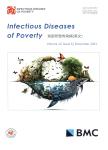Comparing different machine learning techniques for predicting COVID-19 severity
作者机构:Institute of Basic Research in Clinical MedicineChina Academy of Chinese Medical SciencesNo.16Nanxiao StreetDongzhimenDongcheng DistrictBeijing100700BeijingChina 不详 National Resource Center for Chinese Materia MedicaChina Academy of Chinese Medical SciencesNo.16Nanxiao StreetDongzhimenDongcheng DistrictBeijing100700BeijingChina
出 版 物:《Infectious Diseases of Poverty》 (贫困所致传染病(英文))
年 卷 期:2022年第11卷第1期
页 面:97-97页
核心收录:
学科分类:12[管理学] 1201[管理学-管理科学与工程(可授管理学、工学学位)] 1002[医学-临床医学] 081104[工学-模式识别与智能系统] 08[工学] 100201[医学-内科学(含:心血管病、血液病、呼吸系病、消化系病、内分泌与代谢病、肾病、风湿病、传染病)] 0835[工学-软件工程] 0811[工学-控制科学与工程] 0812[工学-计算机科学与技术(可授工学、理学学位)] 10[医学]
基 金:National Administration of Traditional Chinese Medicine, (ZYYCXTD-D-202005) Centers for Disease Control and Prevention, CDC
主 题:COVID-19 Severity Machine learning Support vector machine Random Forest Logistic regression
摘 要:Background Coronavirus disease 2019(COVID-19)is still ongoing spreading globally,machine learning techniques were used in disease diagnosis and to predict treatment outcomes,which showed favorable *** present study aims to predict COVID-19 severity at admission by different machine learning techniques including random forest(RF),support vector machine(SVM),and logistic regression(LR).Feature importance to COVID-19 severity were further *** A retrospective design was adopted in the JinYinTan Hospital from January 26 to March 28,2020,eighty-six demographic,clinical,and laboratory features were selected with LassoCV method,Spearman’s rank correlation,experts’opinions,and literature ***,SVM,and LR were performed to predict severe COVID-19,the performance of the models was compared by the area under curve(AUC).Additionally,feature importance to COVID-19 severity were analyzed by the best performance *** A total of 287 patients were enrolled with 36.6%severe cases and 63.4%non-severe *** median age was 60.0 years(interquartile range:49.0–68.0 years).Three models were established using 23 features including 1 clinical,1 chest computed tomography(CT)and 21 laboratory *** three models,RF yielded better overall performance with the highest AUC of 0.970 than SVM of 0.948 and LR of 0.928,RF also achieved a favorable sensitivity of 96.7%,specificity of 69.5%,and accuracy of 84.5%.SVM had sensitivity of 93.9%,specificity of 79.0%,and accuracy of 88.5%.LR also achieved a favorable sensitivity of 92.3%,specificity of 72.3%,and accuracy of 85.2%.Additionally,chest-CT had highest importance to illness severity,and the following features were neutrophil to lymphocyte ratio,lactate dehydrogenase,and D-dimer,*** Our results indicated that RF could be a useful predictive tool to identify patients with severe COVID-19,which may facilitate effective care and further optimize resources.



